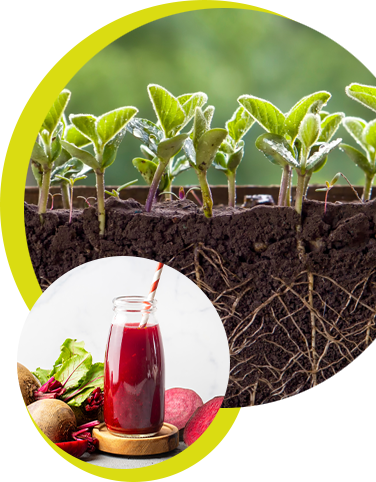Artificial food colors have traditionally been popular due to their effectiveness and low cost. However, today’s consumers are increasingly seeking clean-label and all-natural products. Food and beverage manufacturers must also adapt to a shifting regulatory environment, which is imposing more restrictions and labeling requirements on synthetic additives. While moving from synthetic to natural colors can be challenging, it’s important to understand the key factors involved.
As a global color company, Sensient has a unique responsibility to monitor and observe shifts in the use of color by the food and beverage industry. Today, consumer demand for natural ingredients and clean labels continues to rise across all regions of the globe.


While the use of natural colors in new product launches has been pretty consistent over the last several years, many of the most well-known legacy products continue to make use of synthetic colors. This makes sense, as their loyal consumers are satisified with current formulations.
Recently, various NGOs and regulatory bodies, particularly in the United States, have been working to accelerate the shift toward natural colors. Here are some significant developments:

EU Banned Titanium Dioxide
for Food, Beverages,
and Animal Feed
California Banned Red 3,
Effective 2027
Several US States Introduced
Proposed Legislation That
Attempted to Ban One Or More
Synthetic Colors.
US FDA Elimination of Red 3
approval, Effective 2027
In Asia, manufacturers are recognizing the growing consumer preference for natural ingredients, especially as shoppers increasingly scrutinize the ingredient lists of products.
Contrary to common myths about natural food colors, you can still achieve vibrant shades using natural ingredients. To ensure that natural colors perform optimally in your products,
Work with a color expert to find the best replacement(s) for your
current color lineup and formulate with usage rate changes in mind.
 Because colors from natural sources are less highly concentrated than synthetic colors, brands should expect to see a volume increase in the color needed to achieve the same shades. Manufacturers can expect a volume increase of 4 to 12 times more material compared to synthetic color volumes when switching to natural solutions.
Because colors from natural sources are less highly concentrated than synthetic colors, brands should expect to see a volume increase in the color needed to achieve the same shades. Manufacturers can expect a volume increase of 4 to 12 times more material compared to synthetic color volumes when switching to natural solutions.
The increase is dependent on both the shade target and the application or product. More highly concentrated natural colors or coloring foods can help to mitigate the increased usage rate, but higher strength colors will still use more botanical material unless the increased strength is achieved by developing higher pigment material.
Consider investments in refrigeration and storage capacity
to handle increased inventory.
 While synthetic colors have minimal storage requirements, many natural colors and coloring foods require refrigeration and have a shorter shelf life than their synthetic counterparts. Manufacturers will need to prepare for expanded color product storage and potential refrigeration. The other alternative is to use natural powders, but these generally cost more than liquids.
While synthetic colors have minimal storage requirements, many natural colors and coloring foods require refrigeration and have a shorter shelf life than their synthetic counterparts. Manufacturers will need to prepare for expanded color product storage and potential refrigeration. The other alternative is to use natural powders, but these generally cost more than liquids.
Ask your color supplier about their supply chain security and
ability to scale up volume as needed.
 Unlike synthetic colors, developing a robust and redundant supply chain security for colors from natural sources is both critical and complex. Since colors from natural botanicals are typically derived from orphan crops, increasing supply to meet growing demand needs to be carefully planned. It is also true that some key botanicals are often grown in only one or two countries. Sensient has invested in vertical integration across many of the most important color botanicals and can scale volume more easily, while also ensuring multi-hemisphere redundancy to reduce climate related risks. However, the scale up process typically will take several years to accomplish. The steps required include seed production, multi-hemisphere planting, primary extraction expansion, and processing expansion (if necessary).
Unlike synthetic colors, developing a robust and redundant supply chain security for colors from natural sources is both critical and complex. Since colors from natural botanicals are typically derived from orphan crops, increasing supply to meet growing demand needs to be carefully planned. It is also true that some key botanicals are often grown in only one or two countries. Sensient has invested in vertical integration across many of the most important color botanicals and can scale volume more easily, while also ensuring multi-hemisphere redundancy to reduce climate related risks. However, the scale up process typically will take several years to accomplish. The steps required include seed production, multi-hemisphere planting, primary extraction expansion, and processing expansion (if necessary).
Rather than selecting a preferred formula first and then
addressing supply chain, consider addressing technical and
supply chain questions concurrently. Develop a timeline that
meets your needs with your color partner.
 Agronomy and agriculture take time to expand: Even the most prepared color manufacturer may need up to three years to produce large quantities of botanically sourced colors based on growing cycles. Additionally, if every brand on the market is forced to make a swap at the same time, there will be a bottleneck in the supply chain as demand outpaces supply. Forecasting color needs and securing contracts with your color supplier can ensure availability for your products on the timeline you need.
Agronomy and agriculture take time to expand: Even the most prepared color manufacturer may need up to three years to produce large quantities of botanically sourced colors based on growing cycles. Additionally, if every brand on the market is forced to make a swap at the same time, there will be a bottleneck in the supply chain as demand outpaces supply. Forecasting color needs and securing contracts with your color supplier can ensure availability for your products on the timeline you need.
We anticipate the coming market shift and are readying our supply chain, our manufacturing facilities, and our teams to handle the influx of natural color and coloring food needs.
We encourage our customers and all food and beverage brands to ask your color supplier(s) about their preparation for a color conversion project and the potential for a major market shift forced by consumer demand or regulatory requirements.
Are you ready to convert? Learn more by connecting with our team.